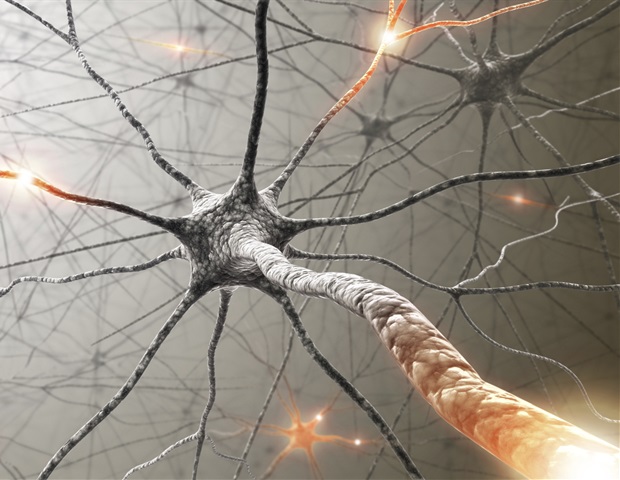Top Stories
Top Stories

Scientists at NYU Tandon have arrived at a critical achievement in their mission to foster wearable innovation that figures out how to gauge key mind components through the skin. Rose Faghih, Associate Professor of Biomedical Engineering, has been working throughout the previous seven years on an innovation that can quantify mental action utilizing electrodermal action (EDA) - ; an electrical peculiarity of the skin that is impacted by mind movement connected with close to home status. Inward burdens, whether brought about by agony, weariness, or an especially pressed plan, can cause changes in the EDA - ; changes that are straightforwardly connected to mental states. The overall objective - ; a Multimodal Intelligent Noninvasive cerebrum state Decoder for Wearable AdapTive Closed-circle arcHitectures, or MINDWATCH, as Faghih calls it - ; would go about as a method for observing a wearer's psychological state, and proposition prods that would assist them with returning to a more unbiased perspective. For instance, in the event that an individual was encountering an especially serious episode of business related pressure, the MINDWATCH could get on this and consequently play some loosening up music. Presently Faghih - ; alongside Rafiul Amin, her previous PhD understudy - ; has achieved a critical undertaking expected for checking this data. Interestingly, they have fostered an original derivation motor that can screen cerebrum movement through the skin continuously with high versatility and precision. The outcomes are highlighted in another paper, "Physiological Characterization of Electrodermal Activity Enables Scalable Near Real-Time Autonomic Nervous System Activation Inference," distributed in PLOS Computational Biology . Surmising autonomic sensory system actuation from wearable gadgets continuously opens new open doors for observing and working on emotional well-being and mental commitment." Rose Faghih, Associate Professor of Biomedical Engineering Previous strategies estimating thoughtful sensory system enactment through the skin required minutes, which isn't commonsense for wearable gadgets. While her prior work zeroed in on gathering cerebrum action through sweat actuation and different variables, the new concentrate also models the perspiration organs themselves. The model incorporates a 3D state-space portrayal of the immediate emission of sweat by means of pore opening, as well as dispersion followed by relating vanishing and reabsorption. This itemized model of the organs gives extraordinary knowledge into surmising the mind movement. The new model was run on information from 26 sound people. The scientists demonstrated the way that they can unravel mind cues with high unwavering quality. Moreover, the computational power necessity of their new calculation is negligible and can get cerebrum and physiological bits of knowledge inside a couple of moments while another past methodology would require minutes. This implies that little, wearable observing innovation fit for inconceivable speed, high adaptability, and exceptional unwavering quality is reachable. The more extensive effect and utilizations of the strategy incorporates execution checking, psychological well-being observing, estimating torment and mental pressure. Emotional well-being following can assist better with overseeing mental imbalance, post-horrendous pressure issues, unreasonable peevishness, self-destructive propensity, and that's only the tip of the iceberg. Execution following and mental pressure following can assist with working on individual efficiency and personal satisfaction. "One's presentation changes in light of their mental commitment and excitement levels." says Faghih. For instance, exceptionally low or extremely elevated degrees of excitement can bring about horrible showing. Thus, it is normal that. Eventually, analysts can use the surmised autonomic sensory system initiation and decoded excitement to foster intercessions for further developing efficiency." One model utilization of this strategy is early determination of problems like diabetic neuropathy. Little nerves communicate cerebrum excitement to many pieces of the body, including those connected to skin conductance reaction. To follow the got cerebrum action, EDA might be estimated and checked consistently in neuropathy-inclined skin region of the body. Assuming a skin region has neuropathy (i.e., small nerves have been harmed), the cerebrum won't initiate that region. By checking changes, specialists can perceive how a condition like diabetic neuropathy advances, and can prompt changes in treatment plans. Another model is an infant patient in outrageous torment following a surgery, who can't convey their level of misery. Specialists might utilize EDA accounts and surmise mind movement to evaluate how much agony the newborn child patient is in and mediate depending on the situation. For Faghih, this work could address a leap forward for psychological wellness care. Checking the psychological status of weak individuals could assist them with getting more compelling consideration and keep extreme results from declining emotional well-being or swings in temperament. Her group is currently chipping away at ways of integrating the model into wearables, including the disposal of educational "commotion" brought about by factors like hearty development and exercise, as well as looking for expected organizations to plan and make the gadgets that would convey the calculation. This exploration was financed by a National Science Foundation CAREER grant. NYU Tandon School of Engineering Amin, R and Faghih, R.T., (2022) Physiological Characterization of Electrodermal Activity Enables Scalable Near Real-Time Autonomic Nervous System Activation Inference. PLOS Computational Biology. doi.org/10.1371/journal.pcbi.1010275 .




